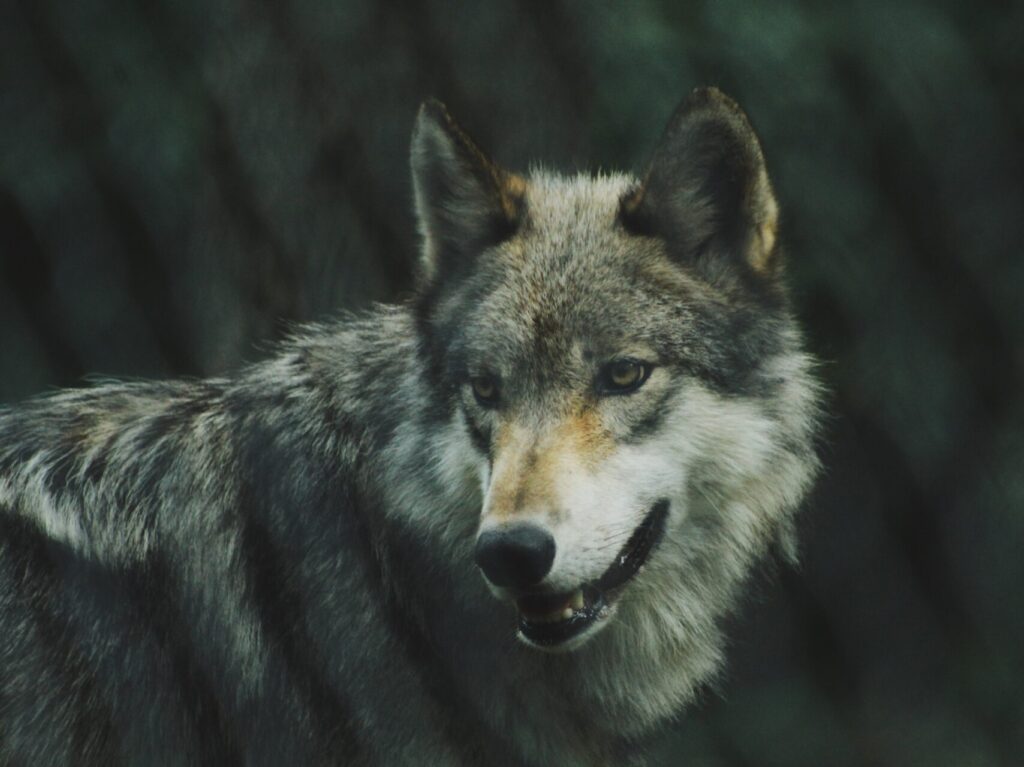
Great Ecology Welcomes Esme!
October 16, 2023
Great Ecology Recognized as one of San Diego’s Fastest Growing Companies
October 24, 2023
Creepy Creature Feature: Gray Wolves
Author: Carter Teasdale
To many, wolves are dangerous, bloodthirsty creatures. As Living with Wolves, a non-profit dedicated to promoting the truth and understanding of the animal, notes: “Since medieval times, wolves have often been depicted as ferocious, red-eyed demons”. Children’s fairy tales such as “Red Riding Hood” and “Three Little Pigs” antagonize wolves for entertainment’s sake. This in turn influences young minds to perceive wolves as having an evil, vindictive nature. Although on the surface these perceptions may seem harmless, in actuality, they do real damage. They pollute our subconscious and propagate fear, in turn creating a disdain for wolves that leads to the attempt to erase them from our ecosystems.
In the past, the United States government insisted upon the eradication of Gray wolves (Canis Lupus), and very nearly succeeded. The wolves were seen as a threat to livestock and large game. What the government failed to realize is that Gray Wolves are a keystone species in their ecosystem, meaning that they are essential to the health of their environment. One of the greatest impacts of gray wolves is that they keep deer and elk (Cervidae) populations in check, benefiting countless plant and animal species, including the large herbivore species themselves.
A deer’s diet is comprised primarily of shrubs, which provide habitats for many species of birds. If deer are overpopulated, the shrub population will be decimated leaving few habitats for a myriad of bird species. Additionally, overpopulation of deer leads to overgrazing of riparian plant communities (aka, plant communities found along waterways). The absence of these riparian plants inevitably causes riverbank erosion and channel widening, resulting in a loss of habitat and in turn loss of population for various species of fish including but not limited to salmon and steelhead trout. Since fish are a source of food for many creatures, channel widening has a much more detrimental effect than one may assume.
Many places have seen this direct impact, including Yellowstone as noted by the Washington Department of Fish & Wildlife. “After wolves were removed from Yellowstone Park in the early part of the last century, the problem of overgrazing became so acute that herds of elk, pronghorn, and bison were culled to protect the remaining vegetation. Since 1995, when wolves were reintroduced to the park, there has been a resurgence of woody browse species in some areas such as willow and aspen”. Further proving the vital importance of wolves, this quote explains that entire plant communities were nearly wiped out. The dire lack of plants would have caused a massive drop in herbivore populations.
Today, gray wolves are protected under the Endangered Species Act, meaning that majority of gray wolf populations are protected from being hunted, harmed, or killed. However anti-wolf legislators are consistently attempting to strip them of their ESA protection. One way you can help save gray wolves this Halloween season is to vote against anti-wolf legislators and educate those who misunderstand these beautiful creatures. And maybe skip the Werewolf or Wolf/Little Red couples costume this year for good measure.
Interested in learning more about creepy creatures? We’ll be featuring one a week the rest of this month in celebration of Halloween, and to dismiss any stigma against the animals that are beneficial to our ecosystems. Check back on our blog next week to see what creature we’re featuring next!

